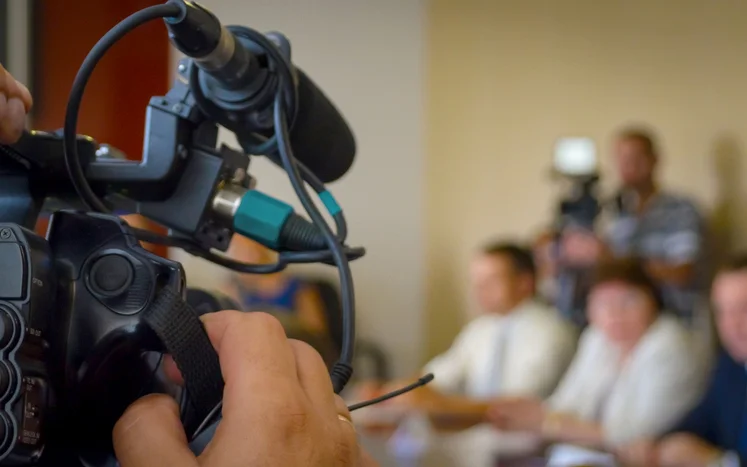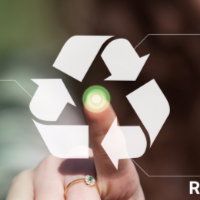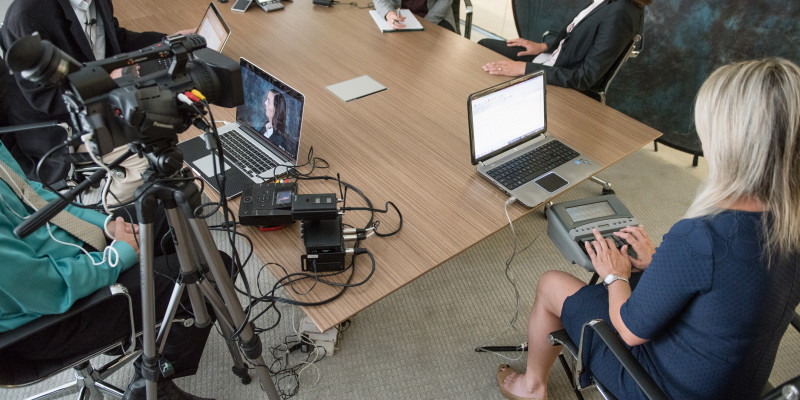Legal Videography: A Crucial Tool for Ensuring Courtroom Transparency
Legal Videography: A Crucial Tool for Ensuring Courtroom Transparency
Blog Article
Why Legal Videography Is Crucial for Accurate Court Recordings
The role of legal videography in court room setups can not be overstated, as it offers as an essential tool for maintaining the integrity of court records. The effects of integrating legal videography right into typical courtroom methods elevate essential concerns concerning its broader effect on the lawful system.
Significance of Visual Evidence
In the world of lawful proceedings, the relevance of aesthetic proof can not be overstated. Visual evidence offers as an effective tool in establishing truths, affirming testimonies, and improving the total quality of a case. This kind of evidence, that includes photos, videos, and representations, can offer a tangible context that spoken summaries typically lack, thus offering juries and courts a more clear understanding of the circumstances surrounding an instance.
Furthermore, visual evidence aids in the retention of details. Human cognition is naturally aesthetic, and individuals are most likely to remember and comprehend information presented in an aesthetic layout. In the courtroom, this can be crucial, as compelling visual evidence can guide point of views and enhance the story provided by legal representatives.
In addition, using aesthetic evidence can minimize misconceptions and obscurities that usually develop from verbal exchanges. By offering a direct depiction of events, visual evidence assists to get rid of subjective interpretations and cultivates a much more objective examination of the realities. As a result, the integration of aesthetic proof into lawful procedures not only reinforces the stability of the judicial process yet likewise enhances the probability of accomplishing a just result.
Catching Non-Verbal Signs
Using innovative videography methods can significantly improve the capture of non-verbal cues throughout lawful procedures. Non-verbal communication, including faces, body language, and eye call, plays an important duty in communicating feelings and intentions that may not be clearly stated in spoken testimony. legal videography. Legal videography uses high-definition electronic cameras and tactical angles to make certain that these subtle hints are recorded with clearness and accuracy
The capacity to evaluate non-verbal actions can provide useful context to statements made during court sessions. A witness's unwillingness or self-confidence can be analyzed through their position or gestures, possibly affecting the court's assumption of integrity. The usage of close-up shots can help concentrate on an audio speaker's expressions, allowing for a much more nuanced understanding of the statement.
Moreover, incorporating several cam angles can develop a thorough sight of communications, highlighting dynamics between parties involved. This multifaceted approach not just boosts the precision of the court document however also aids in preserving the honesty of the judicial procedure - legal videography. Eventually, catching non-verbal cues through lawful videography cultivates a richer, a lot more total representation of court room process

Enhancing Statement Reliability
The Recommended Reading integrity of testimony can be dramatically boosted through using premium lawful videography. Video recordings work as an objective tool that captures not just the talked words of witnesses however additionally the subtleties of their distribution, including tone, pacing, and psychological expressiveness. This multifaceted documents provides a more clear understanding of the witness's trustworthiness and intents, which can be pivotal in lawful process.
Furthermore, lawful videography minimizes the capacity for misinterpretations that may emerge from written transcripts alone. When jurors can observe a witness's temperament and body language in combination with their testament, they are better furnished to analyze the authenticity and integrity of the evidence provided. This aesthetic context can reinforce the testimonial narrative, making it a lot more engaging and reputable.
Furthermore, the visibility of a video clip recording can deter prospective incongruities in testament. Witnesses may be much more careful in their declarations when they recognize they are being recorded, resulting in more precise and genuine accounts. On the whole, top quality legal videography visit this site right here boosts the integrity of testimony, making sure that the court has accessibility to a total and genuine depiction of the realities as conveyed by the witnesses.
Sustaining Appeals and Reviews
Lawful videography plays an essential function in sustaining charms and evaluations by supplying a thorough aesthetic document of court room process. This aesthetic documents records not just the talked words of witnesses and lawyers yet additionally the subtleties of body movement, intonation, and court room characteristics. Such components can be crucial in recognizing the context of testimonies and disagreements provided.
In the appellate procedure, where the emphasis gets on mistakes of legislation and procedural fairness, a video record can function as an essential device for appellate courts. It makes it possible for courts to examine the original trial context, making sure that decisions are based upon a total understanding of the process. The ability to visually analyze the demeanor of witnesses or the communications between celebrations can reveal understandings wikipedia reference that composed records might ignore.

Additionally, lawful videography can aid in making clear uncertainties in testaments or procedural judgments, thus reinforcing the basis for a charm. By supplying a trustworthy, objective account of what transpired in court, lawful videography not only sustains the integrity of the legal procedure but additionally empowers all celebrations entailed to make educated choices regarding their situations.
Simplifying Courtroom Processes
Enhancing court performance, legal videography improves procedures by giving immediate accessibility to aesthetic records of proceedings. This innovation permits courts, attorneys, and juries to review essential testimony and evidence, guaranteeing that all celebrations have a clear understanding of the instance. By capturing the nuances of verbal and non-verbal interaction, videography enhances the record, making it simpler to understand the context and weight of statements.

In addition, video recordings can facilitate remote engagement in hearings, enabling greater adaptability in scheduling and participation, which is especially important in intricate situations involving numerous stakeholders.
Conclusion
To conclude, lawful videography plays a vital duty in guaranteeing accurate court recordings by giving vital visual proof that captures both spoken and non-verbal communication. This technique improves the integrity of statements, sustains appellate evaluations, and streamlines court procedures. By promoting an extensive understanding of court room dynamics, lawful videography ultimately contributes to extra equitable judicial results, enhancing the integrity of the legal system and promoting informed decision-making.
Report this page